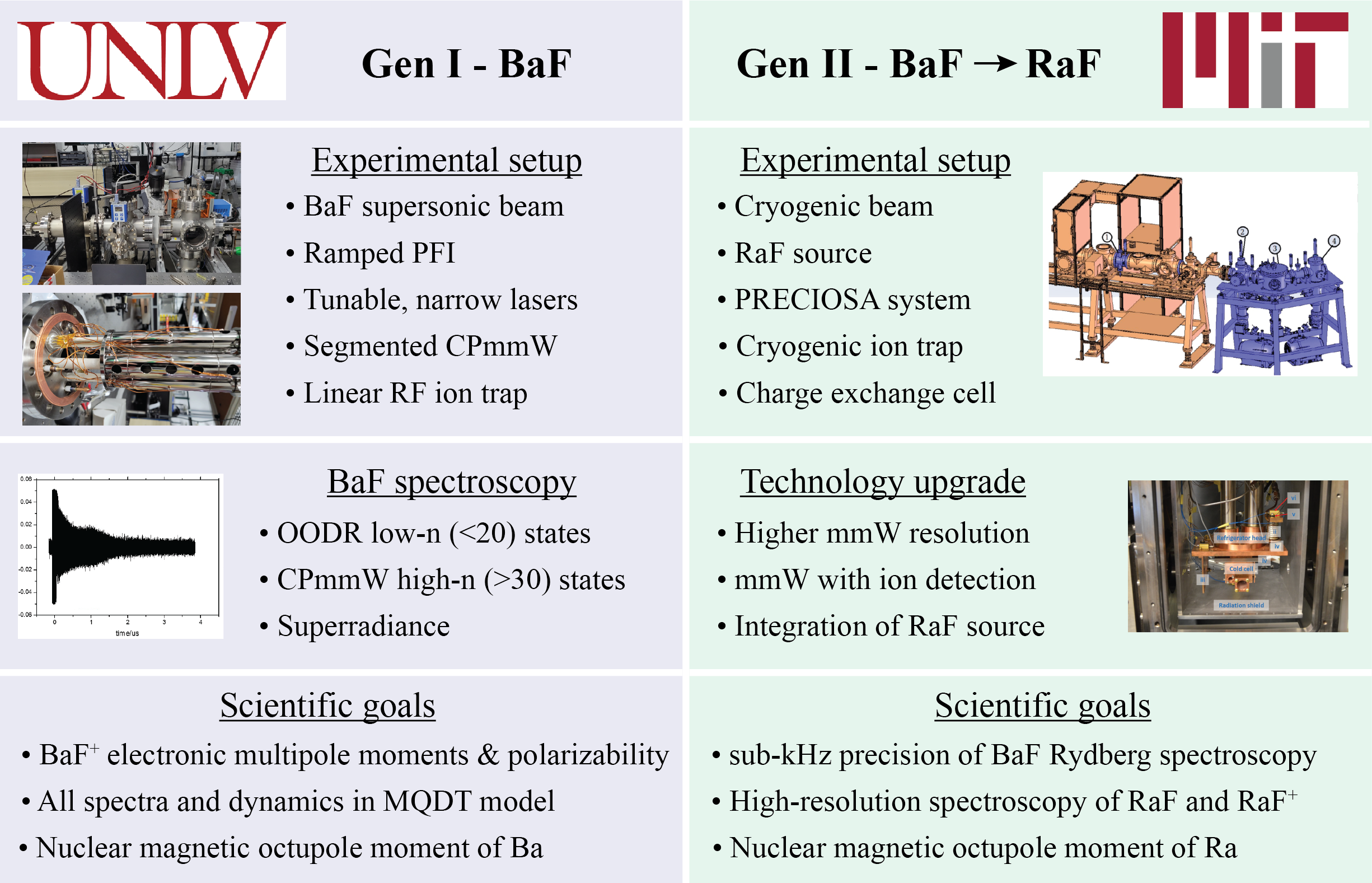Rydberg spectroscopy of RaF and BaF molecules
Motivations
Radium containing molecules, such as RaF and RaOH, have long been heralded by theorists as an optimal testbed for probing parity (P)- and time-reversal (T)-violation effects. In molecules containing octupole-deformed radium isotopes, the symmetry-violating nuclear moments such as the anapole and Schiff moments can be amplified by more than three orders of magnitude respect to stable nuclei. Therefore, RaF provides an opportunity to explore new physics beyond the Standard Model. Historically, the exploration and spectroscopy of RaF has been hampered by the lack of stable isotopes of radium. A significant breakthrough has been achieved recently. A collaboration led by Prof. Garcia-Ruiz at MIT has successfully demonstrated vibrationally-resolved laser spectroscopy on RaF, incorporating five distinct isotopes. This pivotal experiment heralds a new era, enabling high-resolution spectroscopy of short-lived radioactive molecules and inaugurating a gateway for tabletop, low-energy experimental platforms to probe nuclear physics. However, major challenges must be overcome to achieve the precision necessary to study nuclear and particle physics phenomena with these molecules. In this proposal, we collaborate with Prof. Garcia-Ruiz and Prof. Field at MIT on experimental developments to achieve an improvement of precision by three orders of magnitude, critical to enable the first measurement of the magnetic octupole moment in a molecule. These results will be essential to achieve precise control and interrogation of RaF for future symmetry-violating measurements.

Figure 1. Project overview.